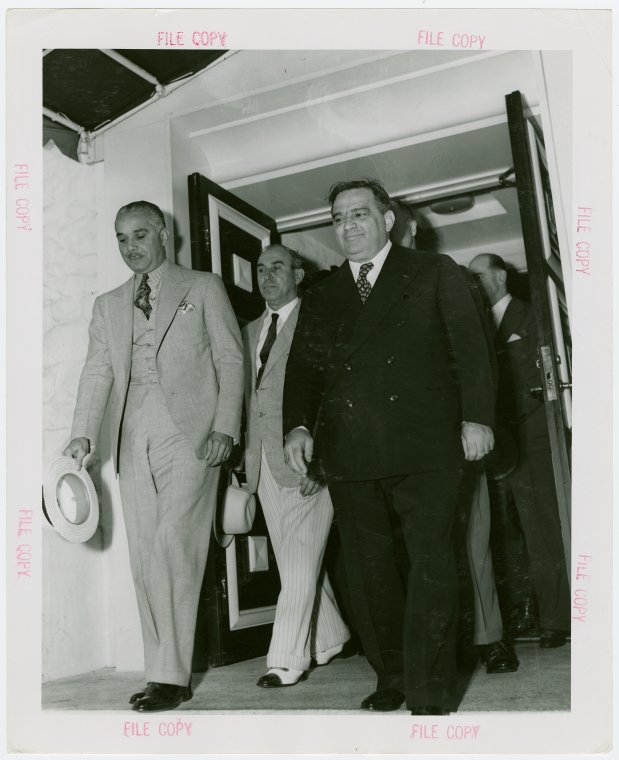Biblio File
Fact Checking a Novel: The Brief Wondrous Life of Oscar Wao
Did that really happen?!?
Historical fiction is a genre that encompasses both fact and fiction, but where the line is drawn between the two can be anyone's guess sometimes. Some authors do tremendous research for their novels to be historically accurate, while others take liberty with history to fit their plot line.
One such novel that rides that line between fact and fiction is The Brief Wondrous Life of Oscar Wao by Junot Díaz. It follows the story of Oscar Wao and his family in a transnational journey between the United States and the Dominican Republic and the fukú, or curse, that follows them.

Díaz provides massive footnotes that detail some of the history of the Dominican Republic that give context to the story, which all seem pretty believable, even if Díaz himself implies that the history of the island is so unbelievable and lends itself naturally to a science fiction story. So where would a reader even begin their research between fact and fiction?
One place to start is with the NYPL databases, for example Biography in Context (Formerly Biography Resource Center). A search here provided information about one of the main historical elements of the book, which is the brutal regime of Rafael Leónidas Trujillo Molina.
According to his biography found in Biography in Context (from Dictionary of Hispanic Biography), the Trujillo regime was indeed as brutal as the book describes, and whose reign of terror extended both to the people of the Dominican Republic and to the people of Haiti. You can also read more about Trujillo in these books: Trujillo: The Death of the Dictator by Bernard Diederich and Holocaust in the Caribbean: The Slaughter of Twenty-Five Thousand Haitians by Trujillo in One Week by Miguel Aquino.
Some of the other details about Trujillo proved to be a little more challenging to find, for example the claim by Díaz that Trujillo bleached his skin. This took a little more detective work involving Google Books, the NYPL Catalog, and poring through the reference books in Schwarzman's Rose Main Reading Room. I did find one reference confirming this claim by Jonathan Hartlyn, who writes in Sulatanistic Regimes that Trujillo used face whiteners to lighten his skin. Also, according to Robert D. Crassweller in Trujillo: The Life and Times of a Caribbean Dictator, Trujillo had his hair tinted and used face powder.
Díaz also claims that Trujillo was “famous for changing ALL THE NAMES of ALL THE LANDMARKS in the Dominican Republic to honor himself" (p2). I started my search of this claim with Atlas Histórico de la República Dominicana [Historical Atlas of the Dominican Republic]. According to this book, Santo Domingo, the capital city, became Ciudad Trujillo during his reign, and several provinces were named in his or his family's honor, including Libertador and Benefactor (Trujillo nicknames), Trujillo, and provinces named in honor of his parents. In addition, according to the Encyclopedia of Latin American History and Culture, Pico Duarte, the highest mountain in the Caribbean, was renamed Monte Trujillo.
Travel guides for the era also proved to be a great source of information for this question, since they name many of the important tourist stops, including Trujillo Stadium and Ramfis Park (Ramfis was Trujillo’s son):The Standard Guide to the Caribbean, Guide to the Caribbean Islands ,Caribbean and Central America and the Bahamas and Bermuda. What the guidebooks also proved, however, was that not every landmark was named for Trujillo, as there were a fair amount of them with non-Trujillo names.
Of course this is only touching the surface of historical elements in the novel. A more exhaustive research project I did found that for the most part, the information in this book is historically accurate, though maybe a little exaggerated at times. For me, finding out more about the history of the Dominican Republic, and finding out that the historical context in the book was true, added to the book's experience for me. It may be a little daunting at first to track down some of the historical details in a work of fiction, but thanks to NYPL's many resources, it proved both possible and truly rewarding!
Read E-Books with SimplyE
 With your library card, it's easier than ever to choose from more than 300,000 e-books on SimplyE, The New York Public Library's free e-reader app. Gain access to digital resources for all ages, including e-books, audiobooks, databases, and more.
With your library card, it's easier than ever to choose from more than 300,000 e-books on SimplyE, The New York Public Library's free e-reader app. Gain access to digital resources for all ages, including e-books, audiobooks, databases, and more.
If you don’t have an NYPL library card, New York State residents can apply for a digital card online or through SimplyE (available on the App Store or Google Play).
Need more help? Read our guide to using SimplyE.

Comments
Thank you thank you thank you
Submitted by Raquelle (not verified) on October 25, 2010 - 4:45pm
Reads like a commercial for
Submitted by Anonymous (not verified) on March 14, 2012 - 11:25am